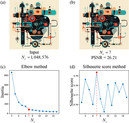Computational multi-layered wood carving art
- Albert Li

- Aug 12
- 1 min read

Authors: Haochen Liu, Zhi Li, Kang Wu, Youcheng Cai, Xiaoya Zhai, Ketian Zhang, Ligang Liu, Yi Min Xie, Xiao-Ming Fu
Time: 2025/08/12
Journal: Computers & Graphics
Highlights
Proposes a computational pipeline for transforming images into multi-layered wood carving art designs
The greedy algorithm ensures connected layers while minimizing visual reconstruction loss
Manufacturability is enforced by widening fragile regions and filling undersized holes
Post-processing reduces weight by hollowing out occluded areas without losing strength
Abstract
We present a computational framework for designing Multi-layered Wood Carving Artwork (MWCA), where intricately carved, colored wooden layers are stacked to create visually striking compositions. Each laser-cut layer must preserve global connectivity and minimize fine branching to maintain structural integrity. Traditionally reliant on artisanal trial-and-error, MWCA design has been time-consuming and labor-intensive. Our method is driven by a key observation: during connectivity analysis, the region of an upper layer can be treated as part of the lower layers. Leveraging this insight, we develop an iterative greedy algorithm to jointly determine the color assignment and geometric shape of each layer. To facilitate processing, we perform an image pre-processing step that reduces the input to a limited color palette. Additionally, a post-processing step is incorporated to enhance the structural integrity of the final output. We demonstrate the effectiveness and practical viability of our approach through 18 examples, including 3 fabrication results.
Keywords: computational design, laser cutting, wooden artworks, path generation, image vectorization, personalized fabrication






































Comments